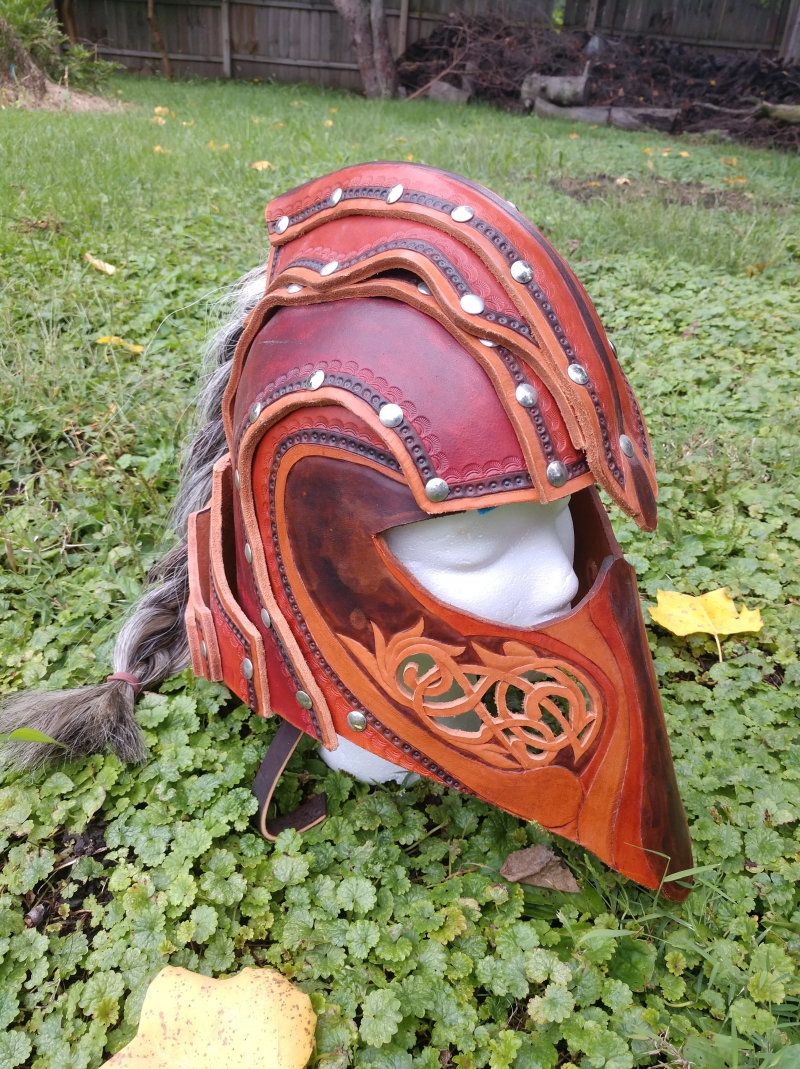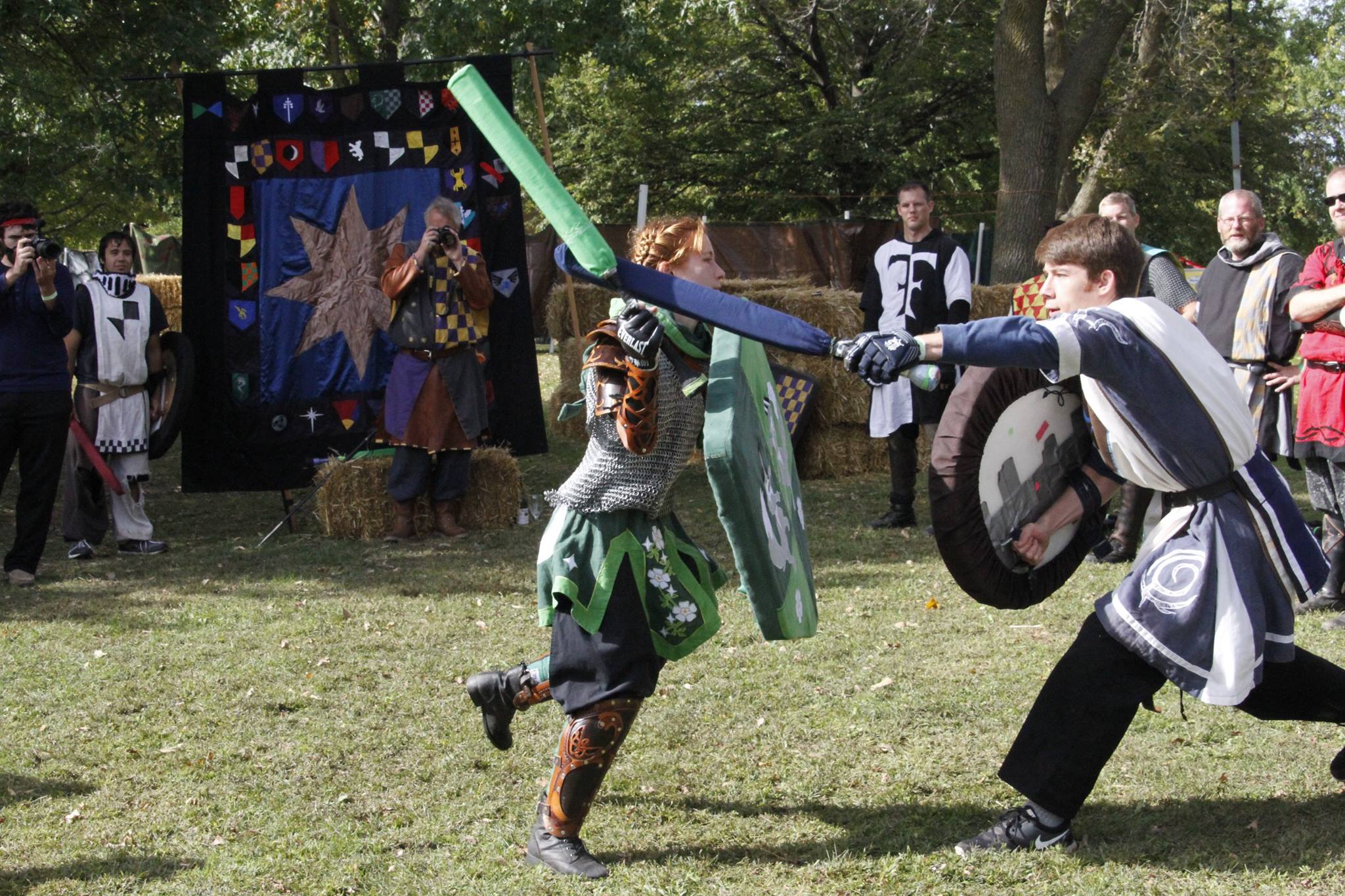Back in the boiling summer sun of August 2014, I was attending my final quad day as a student at the University of Illinois. I wasn’t looking for anything in particular, just something to keep myself active, when I came across the group of people fighting with foam swords. If you’ve spent much time around campus, you’ve probably seen them from afar; the club that dresses up in colorful costumes and hits each other with padded sticks. I had developed a vague curiosity about them during my time at U of I, so when one of the club members spotted me watching the fights and asked if I’d like to try it out, I readily agreed. I was immediately hooked.
The sport is called belegarth — or, more often, bel. It originated in Urbana in the winter of 1986. A group of friends were playing board games in an apartment near Crystal Lake Park and found some foam-padded swords in the host’s closet — relics from a different game he’d played before moving to Illinois. They had such a good time beating each other with sticks, that it became a regular part of their game nights. Over the years, the group’s ranks swelled with like-minded folks and more structure was introduced. There were, and still are, similar games which influenced the growth of belegarth; but ultimately, it split from the pre-existing communities to stand on its own. Today, there are realms — local chapters — all over the country, scattering Canada, and even a few in Europe. At the epicenter of this phenomenon is Numenor, the realm located in Champaign-Urbana.
I, like many others, entered its world with a number of false assumptions. Popular media tends to depict the various cultures around medieval combat as an amorphous conglomerate of social outcasts who are living out pathetic fantasies by pretending to be magical elves. Even the less insulting depictions typically portray foam fighting as being centered on playacting as a character and involving lots of complex rules. To be clear, there are games like Amtgard, Darkon, and many others which involve varying levels of pretending and role-playing; belegarth just isn’t one of them.

Photo by Brittany Norman.
The key distinction is that bel is not a LARP — Live Action Role Playing game. In bel, there is no role-playing. There are no character levels, no magic spells, no hit points. Though we do wear medieval or fantasy inspired clothing — referred to as “garb” — it’s mostly a holdover from the early days and now functions, more or less, like any other sporting uniform. In fact, the base rules of bel are very simple: one strike to the torso or strikes to any two limbs result in “death.” There are a few more nuances for playability and safety’s sake, but most fighters are ready to join in after a five-minute explanation.
Despite the relative simplicity of the game, there is an entire world surrounding belegarth which offers a variety of ways to engage with the sport. The most obvious being the fighting itself. Because bel is a sport with no central fighting tradition — as opposed to boxing or martial arts — there are dozens, if not hundreds, of different fighting styles. Many of the most prominent fighters in the sport have backgrounds in martial arts or the military and develop personal fighting styles influenced by their training, which means that there is a wealth of diverse styles for new fighters to learn and find what suits them best.

Photo by Brittany Norman.
There is also an enormous creative community within belegarth. The majority of weapons and garb are handmade by the fighters, so crafting and design skills are important aspects of the culture. There are people experimenting with state-of-the-art materials to make lighter and more durable weapons. There are people who hand-stich beautifully embroidered dresses. There are people who work with leather and steel to craft breathtakingly intricate armor. There are people who never step onto the battlefield and whose only involvement with bel is making things. There are even people who have made a livelihood out of belegarth by selling their creations to others.
Fighting and crafting are certainly the most unique aspects of bel, but the glue that holds everything together is the social aspect. Ultimately, bel has a very strong community with something for everyone. When we come together for multi-day events, the daylight hours are filled with fighting, but when the skies turn dark, we feast and make merry. Some don cloaks of wool and drink from horns as storytellers and bards perform for the crowd; some pack in close around a gladiator pit to cheer and jeer at the challengers; some hold raucous parties around a bonfire; some rove about from camp to camp spreading stories and cheer; some sit quiet vigils to reflect; some spend late nights playing cards with old friends; and still others turn in early, wanting to be well rested for the next day’s battles.
With all of the different aspects of belegarth to explore, Champaign-Urbana is one of the best places in the world to do it. We are the birthplace of bel and we are home to some of the most skilled people in every area of excellence that bel has to offer. Many of the top fighters, leading innovators in weapon design, and most skillful craftspeople live in the area. For an outsider looking to dip their toes into the world of belegarth, there’s no better place to be.
Unfortunately, this isn’t currently the best time to engage with bel. COVID-19 has put a hold on practices and events nationwide. The community has stayed strong through the lonely months in several ways such as talk show style streams interviewing prominent members of the sport, and even a virtual event, held as a multi-day gaming tournament. We have all found ways to maintain a sense of community and culture during the quiet times. Of course, people are eager to return to the fighting fields, but we are managing to stay connected in the meantime.
Overall, bel is more than meets the eye. It’s a fantastic way to stay in shape, learn a new skill, get in touch with all kinds of people, and have a ton of fun. If you’re interested in learning more, find our Facebook group “Realm of Numenor! (UIUC Swordfighting)” to be updated when we begin the process of re-opening regular practices.








